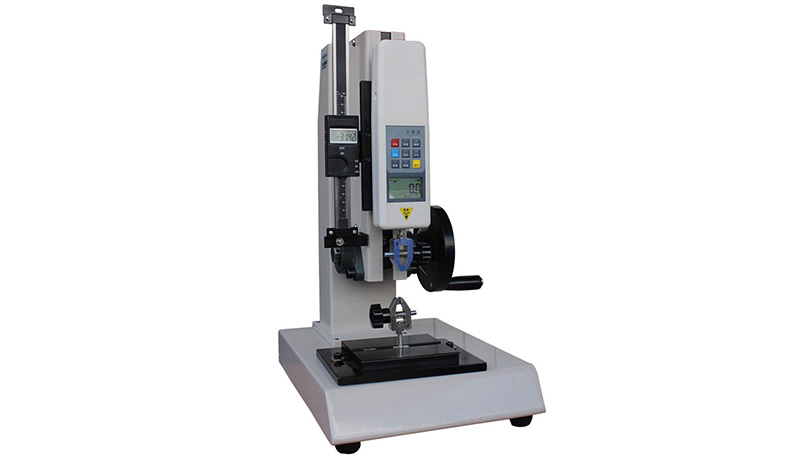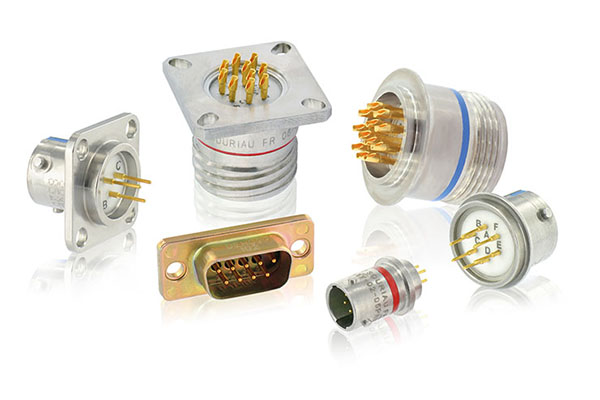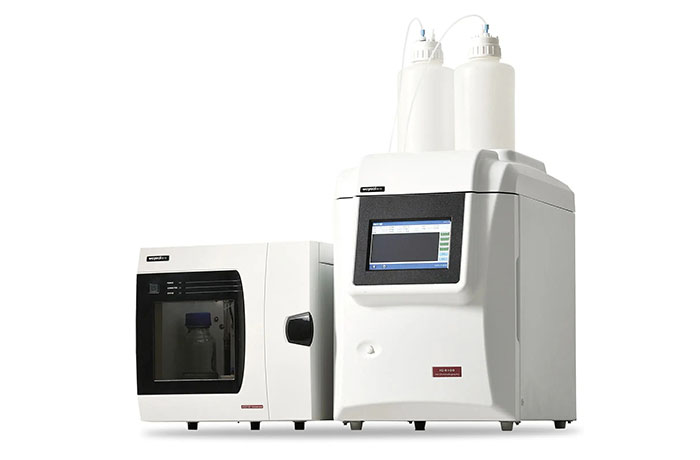What are the classifications of automatic spring testing machines?
- Spring torsion testing machine:
The machine displayed the torsional torque and angle values digitally. It can correct the angular displacement of the torque center by allowing the angle measurement to adopt the angular displacement sensor. Furthermore, the machine can perform stiffness calculations, result printing, data query, overload protection, manual loading, optional left and right rotation, etc.
- Spring tension and compression testing machine:
The machine is designed as per the technical requirements proposed in the national spring tension and compression testing machine standard.
- Spring fatigue testing machine:
The machine is primarily employed for low-frequency fatigue performance tests of various coil springs. In order to actualize the compression motion of the spring, it is primarily powered by the motor and reducer connecting the cam to drive the connecting rod in a reciprocating motion.
Scope of application of spring testing machine:
Each spring has a different requirement and product specification. The various types of springs include coil springs, extension springs, torsion springs, progressive springs, etc. The force value range for the spring testing machine is mentioned below:
- Spring tension value range: 5KN, 10KN, 20KN, 50KN, 100KN, 2000KN, 5000KN
- Spring Torsion Value Range: 50Nmm, 100Nmm, 500Nmm, 1000Nmm, 5000Nmm
- Spring fatigue force value range: 5KN-1000KN
What is the difference between a spring and electronic testing machine?
- Test object:
The spring testing machines primarily determines the strength of various springs, elastic components, and metal materials. In contrast, the electronic testing machine measures tensile strength, compression, benching, and mechanical shearing properties of metallic and non-metallic materials.
- Measurement results:
The spring testing machines determine the spring deformation or the force value corresponding to several deformation points of the spring. It also measures spring stiffness. As far as the electronic testing machine is concerned, it’s used to determine tensile strength, yield strength, and elastic modulus of materials. In the case of a specific gauge length extension, it is primarily the force measurement and the corresponding force value.
- Test method:
The spring force value can be measured for the spring testing apparatus as long as the test spring is hung on the hook to set the amount of deformation. The electronic testing machine determines the actual gauge length of the study after the sample is installed on the attachment, followed by corresponding deformation measuring installation.
- Calculation method:
The software considers the influence of the testing equipment when the test results are obtained for the spring, and the outcome accurately represents the spring.
The accuracy of displacement testing is generally influenced by various elements, including detecting techniques, overall machine stiffness, platen parallelism, measuring components, materials, load-displacement sinking, etc. As long as these factors are overcome, accuracy is not a problem.
What factors determine the accuracy of the spring testing machine?
The accuracy of the spring testing machine is a critical technical indicator. What factors determine the accuracy of the spring testing machine?
- The ball screw is crucial in controlling the movement of the sensor. In case of a gap in the screw, the resulting data will influence the maximum deformation and elongation after breaking. Nowadays, some screw rods of electronic universal testing machines are T-shaped standard screw rods. In this instance, the gap is relatively significant, the friction force is relatively strong, and the service life is rather brief. High-precision, gapless ball screw with a service life of several decades and surface quenching hardness of HRC58–62. Additionally, it is promised that the accuracy will not change.
- The second factor affecting accuracy is the transmission system. Nowadays, Certain transmission systems employ a reducer, whereas some use an ordinary belt. The drawback includes that the reducer requires lubrication, whereas the synchronization of the ordinary belt may affect the test results. A full arc synchronous belt in the deceleration phase of the testing machine’s transmission system by Yuelian Instrument ensures high transmission precision, efficiency, stability, low dry noise, and a long service life without maintenance.
- The force value of the testing machines is important as the spring’s quality determines the accuracy and force measurement stability. The spoke type is typically used for large force values, and the S type is typically used for lower force values of the tensile machines available on the market. Default in the accuracy of the strain gauge or the anti-aging material of the glue employed to fix the strain gauge is not up to the mark, and the accuracy and service life of the sprint testing machine is affected.
- The power source of the spring testing machine affects the accuracy. Nowadays, certain spring testing machines use ordinary three-phase or variable frequency motors. It is controlled by analog signals with slow control response and inaccurate positioning. Generally, the speed regulation range is narrow. The speed control is erroneous if there is a high speed and no low speed, or vice versa if there is a low speed and no high speed. The motor used by Yuelian Instrument is Japan’s Panasonic full-digital AC servo motor. The control strategy uses fully digital pulse control. The motor can ensure accurate full-scale speed control, fast response times of up to 0.01 seconds, a wide speed range of 0.001 to 1000 MM/MIN, the long service life of up to several decades, and minimal maintenance.
- The measurement and control system of the spring testing machine influence the accuracy to an extent.
How to choose a spring testing machine?
Various spring torsion testing machines are available. Based on functionality, it can be divided into three types:
- Manual
- Automatic
- Micro-computer control.
The primary focus while buying a good spring torsion testing machine is product quality and accuracy. It’s important to focus on the brand, but a good product is not connected to the brand but rather the accuracy and quality it provides. Therefore, everything should be considered before buying spring torsion testing machines. The choice of a spring testing machine is influenced by the cost of the machine itself and the cost of ongoing machine upkeep and performance enhancement. Stable quality will require fewer maintenance costs in the future. The following factors should be considered before purchasing a spring tensile testing machine:
- The tensile strength of the force range material must be considered. The difference in tensile force range determines the difference of the sensor.
- The machine type should be selected based on the nature of the items to be tested.
- Three basic configurations are available: i) Host computer, ii) Microcomputer, and iii) Printer. If the microcomputer function is vital, it can be printed directly and equipped with ordinary computers.
- Eight items, including force value, elongation, tensile strength, constant elongation, yield strength, elastic modulus, and maximum test force, can be included in the output results of the test. This is the comprehensive result output when the microcomputer is operated.
- Flexible packaging needs multi-purpose tensile testing equipment that may be used for tensile, compression, bending, ripping, shearing, 180-degree peeling, and 90-degree peeling tests depending on different fixtures.
- Some equipment on the market is in the range of 10~500 mm/min, and others are in the range of 0.001~500 mm/min. The latter employs the servo system, and the price is higher than the former since it uses an ordinary speed control system. It is less expensive but reduces accuracy because of roughness.
Things you need to know before using a spring testing machine
Before using the spring testing machine, confirm if the machine is in a normal state and check whether the running parts are safe and reliable. Adjust the position of the dial needle. Adjust the dial needle, so the top plane is near the pointer column when the spring is free in the vertical position, then tighten the fastening screw on the dial needle. Now that the pointer is in the top reading position of the reading plate.
The sole purpose of the air shock test of the spring testing machine is to determine if the energy loss is significant or not. During the process, the spring is uplifted to a pre-raised angle position, and the manual pointer is set to the maximum reading value. The joystick is pushed to a shock position. Once the impact is felt and falls back, move the pointer back o the maximum reading value of the reading plate manually. The handle can be moved to the “braking” position when the second impact of the spring is complete, allowing the value indicated by the pointer to be read. Divide the difference between the two indicated values by 2 to obtain the energy loss during an air strike.
The sample is installed by first supporting the spring pattern on the bracket, positioning it so that the groove is facing away from the blade, laying it flat and tightening it on the two jaw supports, and using the alignment plate to align it. Consequently, the notch is situated in the middle of the span of the jaws to align the impact blade. The impact test is then carried out by removing the alignment plate.




